Photo Gallery
Table of Contents
- Fixed Workstations
- Flexible Workstations
- Free Address Workstations
- Leadership Workstations
- Collaborative Spaces
- Kitchenettes
- New Technology
- Formal Meeting Rooms
- Quiet rooms
- Design Features
- Virtual Tours
Fixed Workstations
Fixed workers generally work in the office over 60% of the time, for example, an administrative assistant or an analyst. A Fixed workstation measures approximately 4.5 m2.
This is a freehand 3D sketch to depict a workstation and its measurements that would be used for a Fixed Worker.

The following photos are examples of Fixed workstations.


Flexible Workstations
Flexible workers are in the office less than 40% of the time, for example, an account executive or an auditor. A Flexible workstation measures approximately 3.0 m2.
This is a freehand 3D sketch to depict two open-concept workstations and their measurements for Flexible Workers.
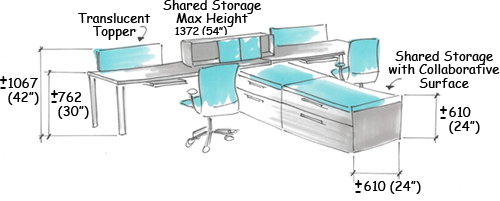
The following photos are examples of Flexible workstations.
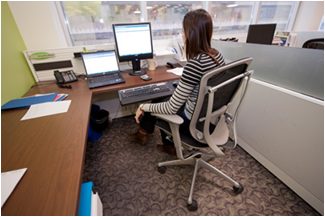
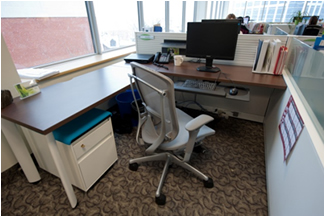
Free Address Workstations
Free Address workers generally work off-site, for example, a remote worker or an inspector. A Free Address workstation measures approximately 1.5 m2.
This is a freehand 3D sketch to depict a row of workstations and their measurements for Free Address Workers.
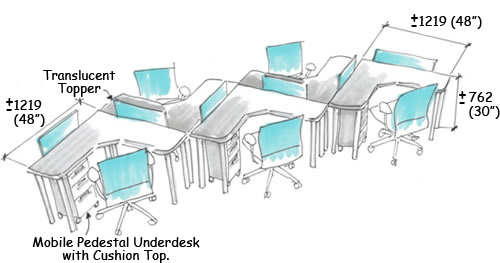
The following photos are examples of Free Address workstations.
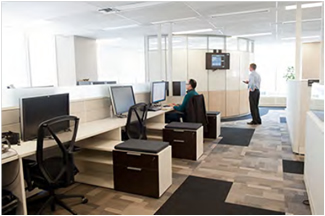

Leadership Workstations
A Leadership Worker is an employee who occupies a position of leadership, such as a Director, Director General or higher. They are often in and out of meetings but also need privacy while they are in the office. Those who choose an open-concept workstation would benefit from access to natural light. They would also be given priority to a small meeting room and have access to a quiet room for privacy needs. Leadership Workers may have an enclosed office but it is not mandatory and enclosed offices are now generally located in the interior of the building, sometimes with no access to natural light in the office.
The following photos illustrate different Leadership workstation options.
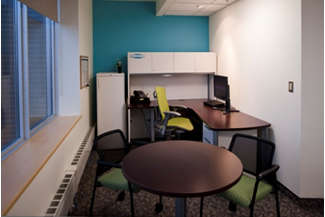
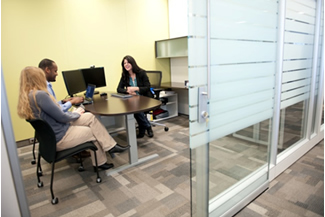
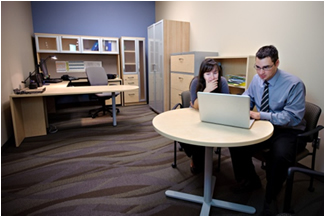
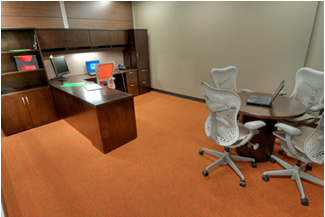
Collaborative Spaces
The way we work is changing and employees now need more space to collaborate with colleagues. Collaborative areas offer spaces for employees to meet both formally and informally away from their desks. Collaborative areas with soft seating and useful tools such as a whiteboard or interactive whiteboard encourage employees to make use of the space.
The following photos are examples of collaborative space.
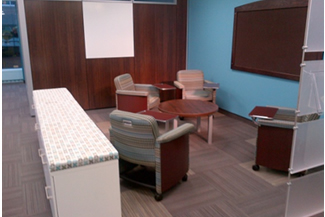
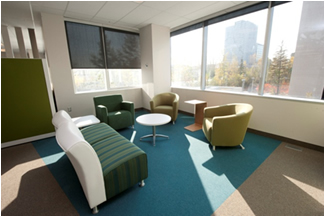
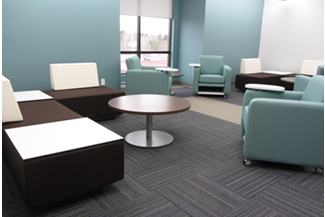
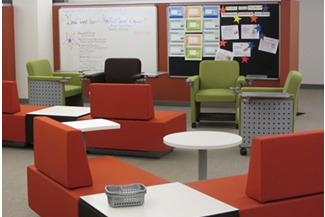
Kitchenettes
Kitchenettes can be used as a collaborative area for employees to work together away from their desks and as an alternative to an enclosed meeting room. There are many different options for kitchenette designs including bench-style tables, barstool tables, and traditional tables.
The photos below illustrate two different kitchenette styles.

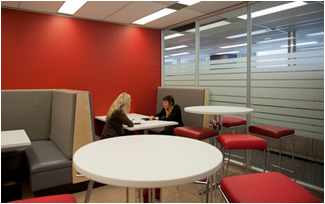
New Technology
Technology is continuously evolving and the incorporation of new tools like interactive whiteboards and videopresence units into the way we work can be useful in many ways, from connecting employees from different regions to working on a live document together as a team.
The following photos are examples of new technological tools many offices are choosing to invest in to increase collaboration, reduce travel costs and printing, thereby reducing government's environmental footprint.
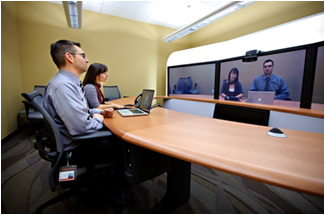
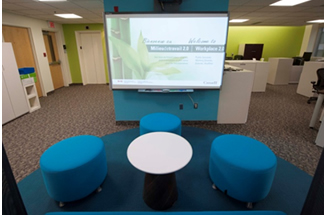
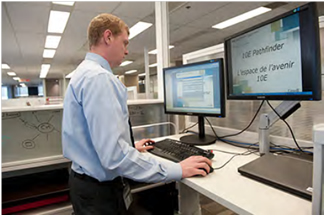
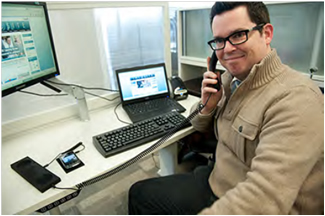
Formal Meeting Rooms
The modernization of formal meeting rooms involves updating furniture and designs, and incorporating new technological tools such as videopresence. Using demountable wall systems are becoming more popular not only because they are more sustainable but also because they allow for a large meeting room to be divided into two or more smaller meeting rooms, helping to maximize space and reduce the use of dry wall.
The following photos are examples of formal meeting rooms.
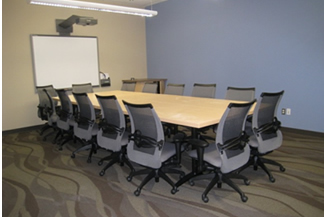
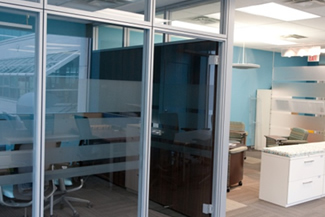
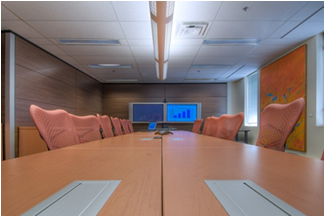
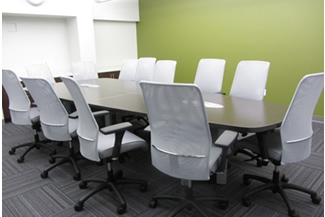
Quiet Rooms
These are spaces intended for the shared use of personnel who normally occupy open workstations. They provide an enhanced acoustical environment for a private telephone call, to support work requiring a high level of concentration, or similar functions.
The following pictures illustrate different quiet room styles, one with a demountable wall with a sliding glass door and the second with soft seating.
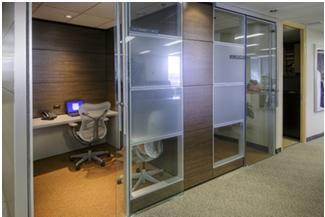

Design Features
Workplace 2.0 encourages the modernisation of the physical workplace, including modern furniture but also modern designs in the architectural elements of new buildings. Unique design features help to add personality to an office and adds beauty to a building.
The following pictures are examples of unique design features in a building including interesting designs in the building walls and doors.
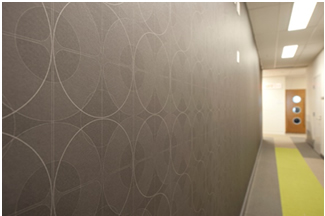
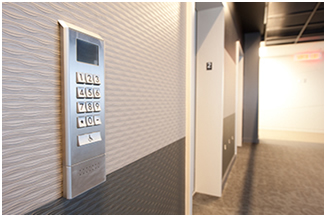
Virtual Tours
191 Promenade du Portage
In early 2012, the 5th floor of 191 Promenade du Portage (Place des Explorateurs) was transformed into a Workplace 2.0 demonstration site.
400 Cooper Street
The Workplace 2.0 pilot project at 400 Cooper Street took place in April 2008.
- Date modified: